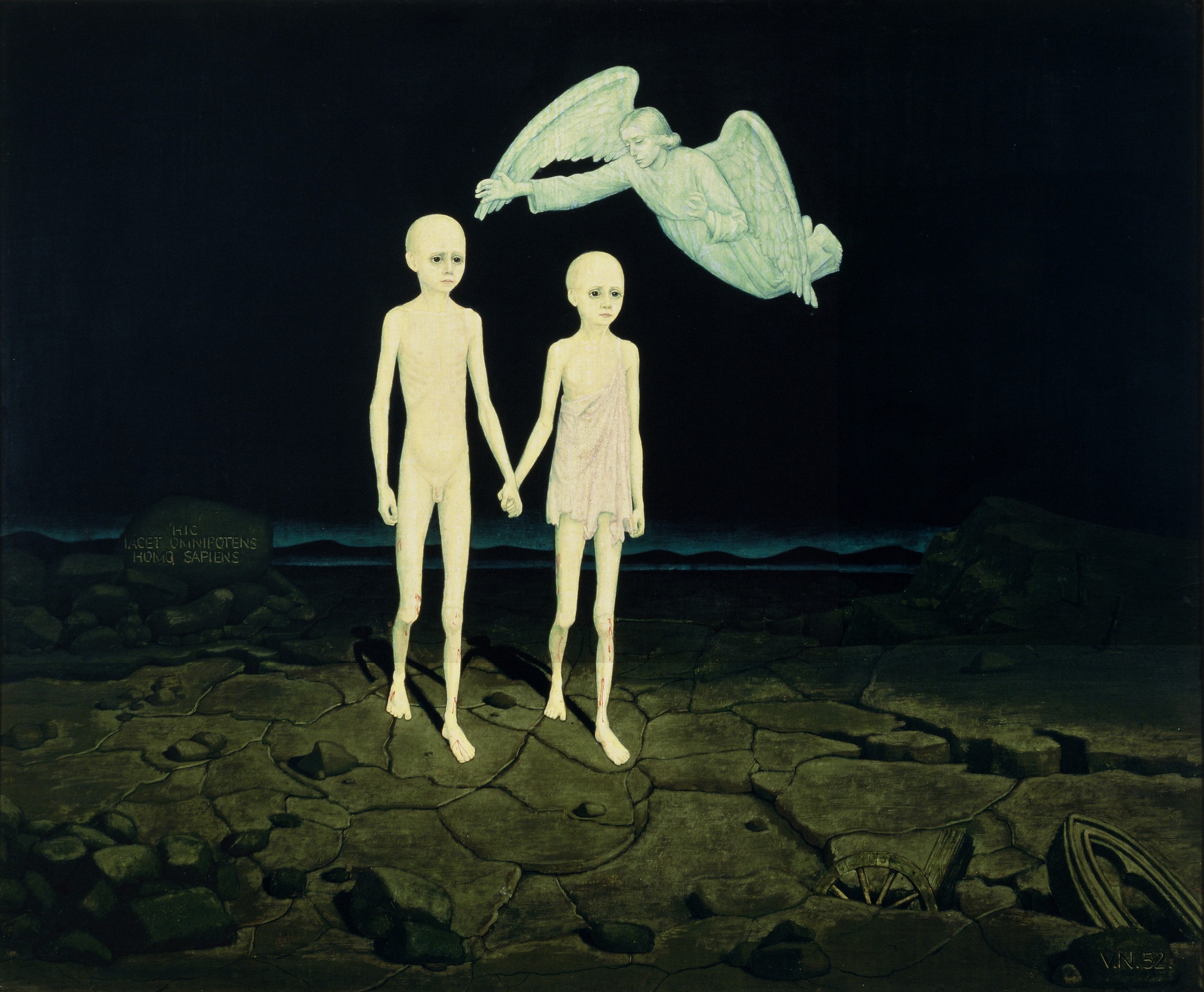Věra Nováková / Retrospective

White Unicorn Gallery in Klatovy
6. 2. - 3. 4. 2011
Věra Nováková is one of the most original women painters of 20th-century Czech art. She was born in Prague on the 17th January 1928. She spent most of her life in the apocalyptically oppressive atmosphere of the 20th century, which had a profound influence on her work. Having studied at grammar school during the Second World War, she was accepted in 1947 by the Prague Academy of Fine Arts. Following the Communist putsch in Czechoslovakia, however, at the end of her fourth semester in 1949 she was found by a Communist committee to be ‘ideologically unsound’ and expelled from the Academy and all other schools. She was subsequently only allowed to carry out manual work. In 1950 she was accepted into the third year of the Higher School of Applied Arts in Prague. From 1958 she was officially permitted to work as a freelance artist, though she was not able to exhibit her work in public. She never became a member of the official Czechoslovak Artists’ Union, nor did she ever apply to join it. Under Communism she earned a living mainly by illustrating specialist literature and later also children’s books. In 1973 and 1974 she was employed at the Archaeological Institute in Prague, where she made drawings of pottery fragments for its archives. Throughout her life she has devoted herself to painting and drawing.
Věra Nováková’s fate is inextricably linked with the difficult development that Czechoslovak and, subsequently, Czech society has undergone since the end of the Second World War. It is impossible to reflect on her work without involving broader historical facts that influenced and determined it so profoundly. On the other hand it must also be stressed that the uniqueness of her work lies in the fact that, following her expulsion from the Prague Academy of Fine Arts in 1949 during the first wave of Communist repression, she developed as an artist not only outside the context of official art but also in seclusion from the unofficial scene too. The originality of Věra Nováková’s work stems to a large extent from the fact that, while emerging as a reflection on her inner self and external events, it bore no tangible debt to the prevailing contemporary expressions of academic realism and avant-garde experimentation. Nováková did not work alone, however; since the critical period of her early years right up to the present day, she has lived in close human and artistic proximity to another exceptional figure of comparable standing in Czech art of the second half of the 20th century – her husband Pavel Brázda, with whom she has spent her entire adult life in a lively discourse.
Věra Nováková has been painting for sixty years. Looking back, her work comprises clearly defined areas in terms of theme, motifs and stylistic approach that often overlap or re-emerge as she focuses once more on earlier aspects. Throughout, however, she has devoted herself to what she herself calls ‘the fundamental question’: birth, life and death as the essence of human existence. Although her firm Christian faith is an integral part of how she perceives herself and the human world, she does not see the focal point of her work in what is abstractly spiritual but in what is humanly inward, specific and rooted in tradition.
- Věra Nováková’s rare ability to truly understand the inner being of her fellow man is something she continues to incorporate into her artistic expression. Her work returns us to the fundamental questions and values of human life, and is thus capable of touching us deeply regardless of the specific framework of historical realities.
The forthcoming retrospective of Věra Nováková’s work traces the whole of her work to date: the surreal ‘existential’ still lifes of the late 1940s, the apocalyptic visions (though with the hope of humanity’s resurrection) of the early 1950s, her original conception of structural abstraction during the first half of the 1960s, the portraits and biblical scenes she has been focusing on since the 1950s and her paintings inspired by exploring the formal and symbolic potential of letters of the alphabet. These last mentioned works, in which the letter is a plastic and complex mediator of the human story, provided the conceptual basis of her work during the 1960s and again from the 1990s.
During the exhibition, a representative and richly illustrated monograph of Věra Nováková’s life’s work will be published by Argo Publishers, featuring texts by Richard Drury, Pavla Pečinková and Pavel Brázda. This book provides the very first exhaustive survey of the work of an exceptional figure in Czech art of the past sixty years. We will let you know about the precise date of the book launch in due course!


 Česky
Česky
